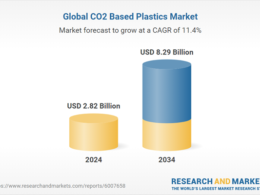The market for durable carbon dioxide removal (CDR) credits reached an all-time high in the second quarter of 2025, with companies purchasing 15.48 million tonnes—nearly doubling the cumulative volume of all previous quarters combined, according to the latest CDR.fyi report.
The surge marks a pivotal moment for the nascent but rapidly growing sector, eclipsing the 13.6 million tonnes purchased in Q1 2025 and signalling increasing corporate appetite for engineered carbon removal solutions.
Microsoft leads the charge with landmark deals
Tech giant Microsoft accounted for an overwhelming 93.8% of Q2 activity, contracting 14.6 million tonnes of durable CDR through five major agreements. The largest of these involved a 6.75 million tonne deal with AtmosClear, followed by 3.7 million tonnes with CO₂ Limited. Other partners included Stockholm Exergi, Hafslund Celsio, and Exomad Green, which provided 1.24 million tonnes of biochar-based removals.
Since 2020, Microsoft has purchased nearly 25 million tonnes of durable carbon removals—representing roughly 79.5% of the global market volume.
Corporate demand broadens beyond big tech
Even without Microsoft’s participation, Q2 was the second-strongest quarter on record for non-Microsoft purchases. Other corporates procured around 902,000 tonnes of durable removals, led by JPMorgan Chase with contracts for 450,000 tonnes of bioenergy with carbon capture and storage (BECCS) and 50,000 tonnes of direct air carbon capture and storage (DACCS).
Additional buyers included Swedish firms Wihlborgs and Helsingborgshem, along with Capgemini, Mitsui O.S.K. Lines, SAP, and the Frontier Buyers coalition—signalling a maturing and diversifying buyer landscape.
BECCS and biochar dominate technology preferences
BECCS emerged as the most contracted CDR method in Q2, accounting for 86% of total volume. Biochar, a key biomass-based removal solution, delivered 89.4% of the 116,800 tonnes verified this quarter. Other biomass-based methods such as direct storage and geological sequestration comprised an additional 6.6%.
The Nordic region continues to lead in BECCS deployment, aided by access to forest biomass, supportive energy markets, and infrastructure projects like Norway’s Longship and Northern Lights.
Among suppliers, biochar firms featured prominently. Exomad Green topped the list with 172,000 tonnes delivered and nearly 1.76 million tonnes contracted in total. Other top performers included Aperam BioEnergia, Varaha, Wakefield Biochar, and Carboneers.
Fewer investments, bigger deals
Despite record-breaking contract volumes, venture capital activity in the sector slowed. Only eight CDR firms raised a total of $122 million in Q2, down from 24 companies and $137 million in Q1. Most of the funding was concentrated in direct air capture ventures.
Analysts attribute the decline to the market’s transition from early-stage innovation to scaled deployment, where corporate procurement rather than VC funding now drives growth.
Durable CDR aims to close the gap with nature-based offsets
Durable CDR methods remain significantly more expensive than nature-based solutions, with average credit prices around $180 per tonne compared to $35 for forestry or soil projects. In 2024, only 200,000 tonnes of durable credits were retired, compared to 11 million tonnes of nature-based offsets.
Nevertheless, corporate buyers are increasingly aiming for parity by 2030, with many citing stronger net-zero frameworks—such as those from the Science Based Targets initiative (SBTi)—as key motivators.
The global CDR market, currently valued at approximately $2 billion, is expected to reach $50 billion by 2030. If policy momentum and buyer interest continue, it could exceed $250 billion by 2035. McKinsey estimates the sector could scale to a trillion-dollar market by mid-century.
However, concerns persist around market liquidity, credit quality, pricing volatility, and delivery risk. Suppliers and buyers continue to clash over cost expectations, especially for less mature technologies beyond biochar.
Still, Q2 2025 represents a major milestone for durable carbon removal—driven by Microsoft’s anchor investments and an increasingly engaged corporate landscape. With momentum building, the sector is steadily shifting from climate ambition to large-scale implementation.





















